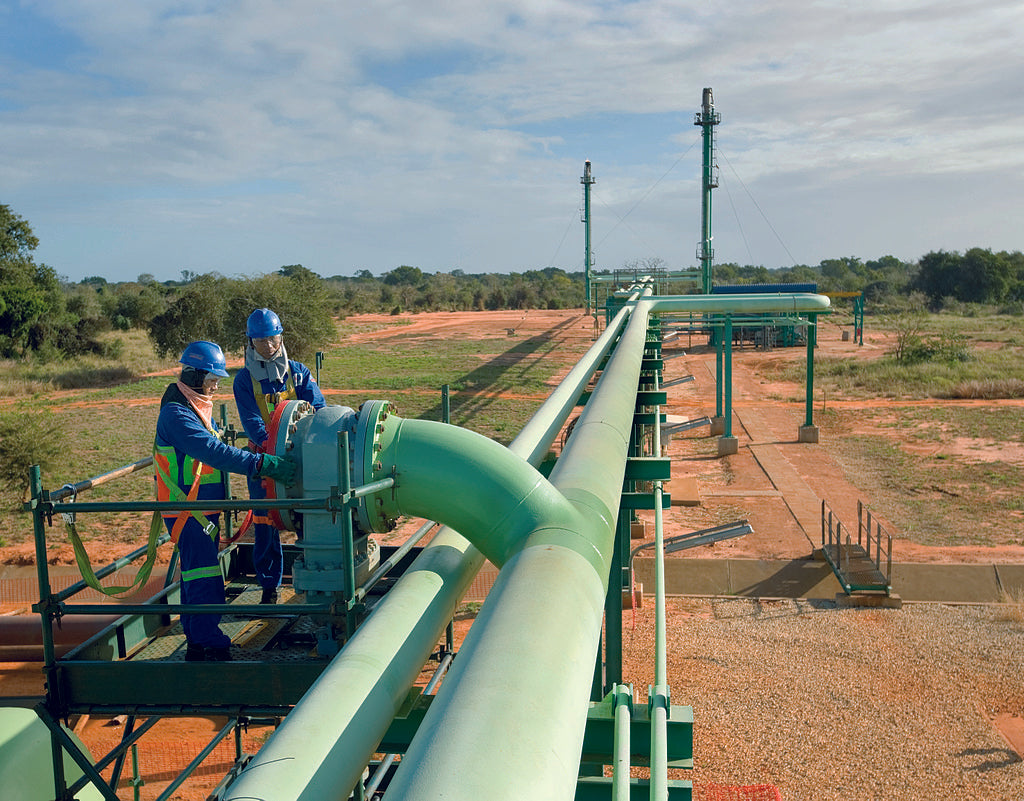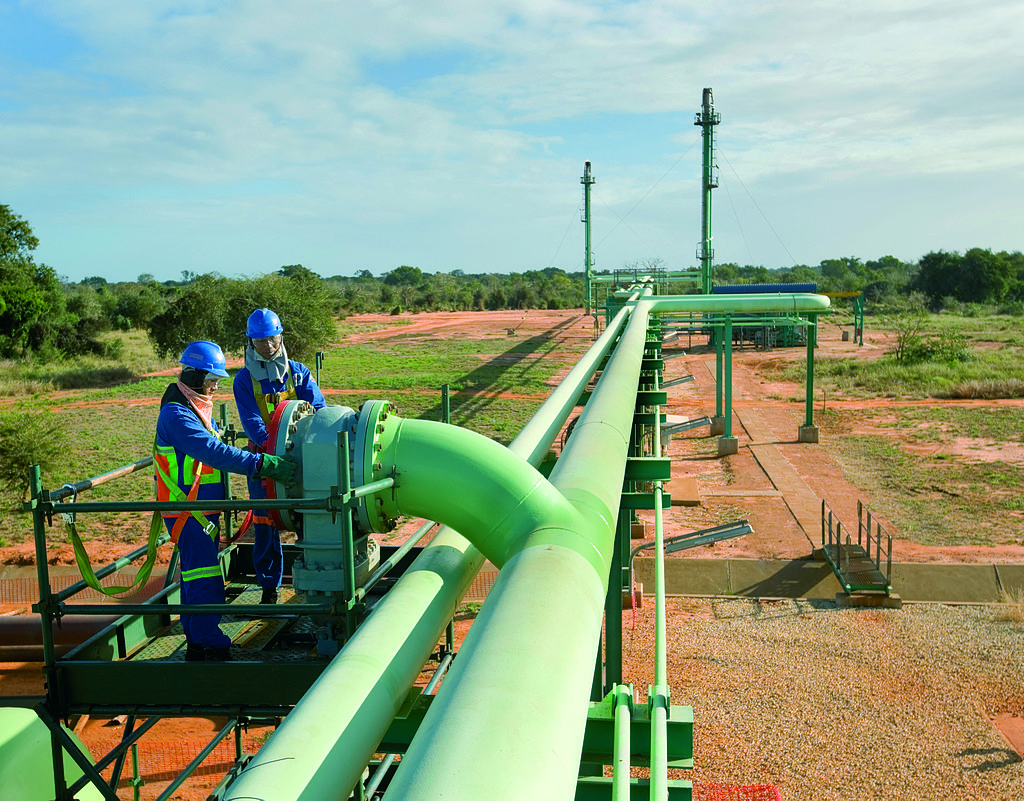
Upgrading Biogas for Pipeline Injection: What are the Environmental and Economic Costs?

Biogas can be cleaned to improve the quality, and once upgraded, it can be injected into a natural gas pipeline. In order for the raw biogas to meet quality standards required by pipeline operators contaminants such as sulfur, siloxane, and water vapor need to be removed. The methane component is then separated from the carbon dioxide to produce a final product that meets the standard required by the relevant local gas utility. In the US, there are about fifty biogas facilities, including landfill gas projects and water resource recovery facilities (one of which is located in California), that upgrade biogas for pipeline injection.
Biogas can be upgraded using several different technologies to separate carbon dioxide from methane, including:
- Chemical/physical absorption using water or amine scrubbers
- Permeable membrane systems
- Adsorption (such as pressure swing adsorption) technologies
In California, BioFuels Energy upgrades biogas produced by the Point Loma Water Resource Recovery Facility located near San Diego using a 2-stage permeable membrane system which recovers more than 85% of the input methane.
Efficiency
It is possible to achieve a methane recovery rate of up to 99% using upgrading technologies currently available. The methane recovery rate for California’s Point Loma WRRF operated by BioFuels Energy is between 85-87%.
According to the EPA report, Evaluating the Air Quality, Climate & Economic Impacts of Biogas Management Technologies, the efficiency of upgrading biogas for pipeline injection — assuming 90% methane yield and 98% methane content in product gas (990 Btu ft-3, HHV) — ranges from 1.6 MMBtu/hour and an output gas flow of 27.5 standard cubic feet per minute for a biogas flow input of 50 standard cubic feet per minute and 1.8 MMBtu/hour to 74.5 MMBtu/hour and an output gas flow of 1267 standard cubic feet per minute for a biogas flow input of 2300 standard cubic feet per minute and 82.8 MMBtu/hour (see table 26 on page 34 of the EPA report).
Emissions Associated with Biogas Upgrading
Criteria Pollutants
Criteria pollutant emissions produced on-site when biogas is upgraded for use as an RNG fuel or injection into a gas pipeline tend to be relatively low since a high percentage of the methane is transported off-site for use elsewhere. Depending on where the methane is finally used (for example to power low-emission CNG vehicles) the total emissions produced both on- and off-site are often lower than emissions produced by stationary engines, turbines, or flaring. For this analysis, only on-site criteria pollutant emissions (consisting of flare emissions produced when tailgas is burned to destroy process methane) were evaluated.
Emissions from tailgas flaring, which are based on emission factors for flaring, tend to range between 0.22-10.2 parts per million (ppm) for nitrogen oxides, 0.18-8.4 ppm for carbon monoxide, 0.05-2.2 ppm for particulate matter, 0.02-1.1 5 ppm for volatile organic compounds and 0.16-7.2 ppm for sulfur oxides.
Greenhouse Gas Emissions
Greenhouse gas emission factors include 1% methane (biogas) leakage from the upgrading process, methane slip as tailgas is flared and nitrous oxide emissions produced as the tailgas is flared. The carbon dioxide emission factor includes the carbon dioxide component in the inflowing biogas that is separated from the methane component during the upgrading process, which is then emitted through the flare together with carbon dioxide that is produced when methane in the tailgas is combusted during flaring.
Emission factors for greenhouse gases produced when biogas is upgraded for pipeline injection are as follows: the average greenhouse gas emission factor for methane is 0.4358 lbs CH4/MMBtu, while the average GHG emission factor for carbon dioxide is 86.1 lbs CO2/MMBtu, and the average nitrous oxide emission factor is 0.00022 lbs N2O/MMBtu.
Based on the emission factors above together with the global warming potential over 100 years (GWP100) of the greenhouse gas in question, the output-based greenhouse gas emissions (carbon dioxide equivalent) of methane for biogas upgraded for pipeline injection is estimated to range from 18.8-866 lbs CH4/day for gas inflows of between 50-2330 SCFM respectively, with the global warming potential ranging between 640-29,400 lbs CO2eq/day depending on the flow input. For carbon dioxide, this ranges from 3,720-171,000 lbs CO2/day, and for nitrous oxide, this ranges from 0.009-0.434, with the global warming potential ranging from 3-129 CO2eq/day depending on the flow input. Emission factors for criteria pollutants and greenhouse gases for biogas upgraded for pipeline injection can be viewed in Table 28 on page 36 of the EPA report).
Costs Associated with Biogas Upgrading
Costs associated with biogas upgrading were derived from an updated financial evaluation compiled by a financial consultant, which modeled costs associated with a proposed renewable natural gas production program in Ontario, Canada. The costs, which were modified to reflect higher costs expected in California, are outlined below.
Installation costs of biogas upgrading technologies range from $3,148,000 for input flows of 72.7 SCFM, 60% methane to $17,000,000 for input flows of 2017.0 SCFM, 60% methane, while operating costs range from $533,700 to $4,816,000. Estimated total levelized costs of energy range from $7.61/MMBtu for input flows of 2017 SCFM, 60% methane to $23.50/MMBtu for input flows of 72.7 SCFM, 60% methane. A full breakdown of capital costs together with operating and maintenance costs for four different sized projects can be viewed in Table 29 on page 37 of the EPA report.
Featured Image courtesy of SASOL, CC BY-SA 3.0, via Wikimedia Commons


